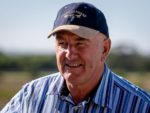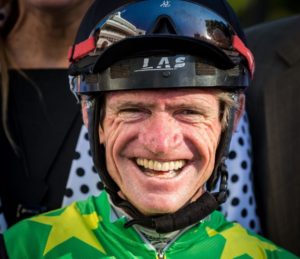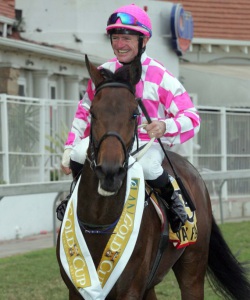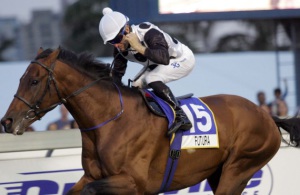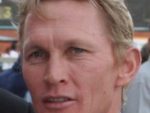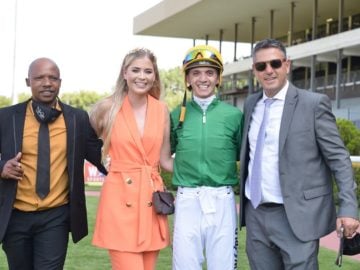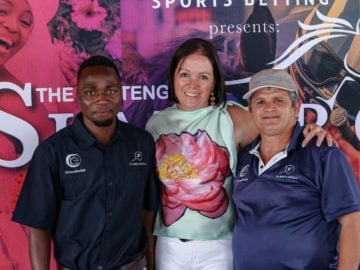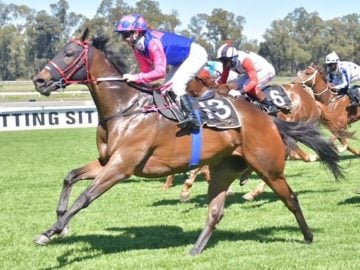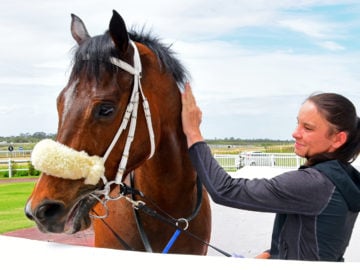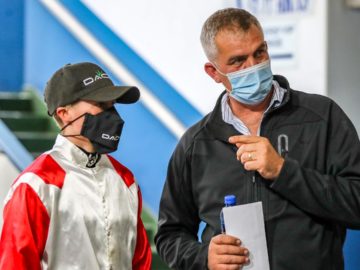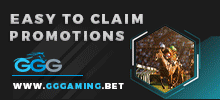The ever-cheery presence of Glen Hatt has been missing from our tracks and race cards for a few months, so the Sporting Post dropped him a line to see how things were going.
Injury
“I hurt my wrist a good year and a half ago, but as a jockey you just get up, take a few painkillers and carry on. I didn’t realise the severity of it. I was just starting to find that I was getting pain in my wrist and into my hand, so I eventually went to a specialist. He said it’s an old injury that had caused wear and tear on the cartilage.”
“Cartilage is the body’s white gold. It’s a tough, slippery connective tissue that covers the end of each bone. It acts as a sort of lubrication and allows the bones to move smoothly over one another. You are born with a certain amount of cartilage and once you’ve damaged it, it’s not easy to repair. If the damage is not too bad and there’s still cartilage left, you can recover to a point and with the correct treatment, you can have quite good results. But once your cartilage is gone, you’ve basically got bone grinding on bone and that’s what’s happened with me, so there’s now some osteo-arthritis in my wrist.”
Didn’t want to miss out
“Things had been going so well since I joined Brett’s yard and we had some great horses like Captain America and Futura. I didn’t want to lose out on anything, so the initial treatment was to inject cortisone into the joint. I had my first cortisone injection in March this year and each injection lasts about a month. Unfortunately it’s not a solution and they say you can only have so much cortisone before you’ve got to stop, so I knew fairly early on that I’d need to look at having an op. I just wanted to get through the season in Natal, which is basically what I did. I think I had about 6 injections in all, but for the last month, I didn’t even bother and just carried on riding. We ended up having a great season ending up with my winning the Gold Cup and the Champion Stakes on the same day. I flew back to Cape Town on Sunday and had the op on Monday.”
Treatment
“When the specialist told me it would be a 3 to 4 month process my initial reaction was ‘are you mad, man?’ but he explained that it’s a very complex op. There are 27 bones in the human hand and there are 8 in the wrist. Normally people with my condition have it at the front of the wrist – closer to the fingers – but mine is at the back, which is quite unusual. Obviously I injured my wrist in riding and then carried on, so it ended up getting damaged.”
“I couldn’t have a fusion as that would have limited the movement in my hand and affected my riding, so this was the only option. It was quite a complex procedure, but Mike Solomons who performed the operation, is the best hand specialist in South Africa. Basically what they’ve done is to cut off 4 or 5 mm of one of the bones in my wrist to create a bit of space. Then they stripped a piece of tendon in my forearm, rolled it into a ball and pushed it in between the bones. That’s where the time comes in – because you’ve cut into a tendon, you have to allow that to heal.”
Right handed
“It’s my right hand and of course I’m right handed. Not having the use of your main hand you suddenly realise how much you depend on it and how limited you are without it. I must admit, you start worrying ‘is this ever going to come right?’, but you’ve got to be positive and just see it through. To start with, I couldn’t even sign a piece of paper, but now I can sign things, pick up weights and do all the rehab stuff. But it’s painful and it’s frustrating. One minute it feels great, and then a few days later, it’s puffed up and you can feel the heat. I’m a bit bored and frustrated and I hate seeing other people riding my winners, but I know it’s a process and you’ve just got to be patient. It’s just not something I’m used to!”
Rarely had time off
“Back in about 2000, I fell off at Durbanville and fractured a bone in my neck. They said I’d broken my neck, but it was basically just a crack in one of the vertebrae. I was off for 2.5 months on doctor’s advice – you can’t take a chance with your neck obviously, but that’s about the only time I’ve ever been off.”
“I’m at the point where I’m doing some strengthening of the tendon and muscles. I was seeing a physio twice a week to begin with to get me on the right track, and now I’m down to once a week. They’ve put me on a programme to get myself right and I am doing most of the exercises on my own. I’ve got one of those little beanbags that you put on your neck. That goes in the microwave for a minute and a half and then onto my wrist to warm it up. Once it’s all warmed up, then I do some stretching and a lot of massage at the same time. It’s not a long process – probably about 10 – 15 minutes and I try and do it 2 or 3 times a day. The thing is not to overdo it as you don’t want to stress out the tendons. You sort of work out where your pain threshold is and work to that and then back off, but each time you try and stretch it a little further. It’s hard and it’s painful, but at the same time I can see the improvement. A month ago my degree of flexion was 45 – 48 degrees and now it’s already up to 60 – 62 degrees and my grip’s improving. It just takes time.”
“I’ve joined Virgin, so I’m running and keeping myself fit. Fortunately I don’t really struggle with my weight – I’m not the sort of person who can sit around – but it’s surprisingly hard to be active with only one hand. After dropping the kids off at school, I usually go straight to the gym and then I try and get to the stables as often as I can, particularly for any important gallops. I’ve gone to a couple of race meetings, but can’t sit still between races.”
Holding the fort
“Brett and I have had a great relationship since we started and I don’t want to lose out on that, but obviously the yard has to keep going. We’d been discussing our options and towards the end of last season Brett said he was going to ask Corne Orffer to fill in. Brett and Corne go way back to when Brett was training for Mrs Plattner and had a satellite yard in Durban and Corne rode for him before he went off to Mauritius. I think he’s a great choice and I knew he’d jump at the opportunity. At track, I’ve been there to tell him about the horses and what to expect. He’s been keen to take the advice and I think it’s working well. I’m still involved with the yard and the horses as well as all the owners and everybody involved, so that all helps keep things on track.”
Getting back
“They initially said it would take 3 – 4 months, so I was looking at the end of November to be riding again, but obviously one has to take into account getting fit and getting racing fit, and you only get racing fit by racing. I was looking forward to getting into a few horses in the lead up races for the Queen’s Plate and was hoping for early December, but it’s now looking more likely to be late December. It’s disappointing, but I’ve learned that you can’t play with your health. As a jockey, your hands are your business. You feel through your hands, and if I bugger around, I’m going to stuff up that ability, so I’m not taking a chance. I’ve got to go with what my hands tell me and I know that the time I spend now will pay off in the long run.”
“It’s quite tough because life carries on and racing carries on – they don’t wait for anyone and in the racing game, you can be forgotten very quickly. We were out at Grand West last week and I bumped into some racing people and a lot of them were coming up and asking ‘Hell man, are you coming back?’ It’s quite a shock to hear that people are thinking ‘he’s going to turn it up.’ I know I’m old, but I’m not THAT old! I’ve got horses I want to win the Met and the July on still!”
“I’m three quarters of the way through getting healed, I’ve just got to stay positive and carry on. The doc says I’ll come right. I just want it to hurry up please!”
‹ Previous
